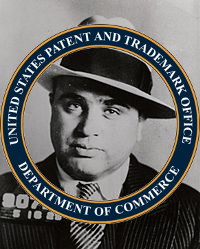

THE just-ended expo in the United States, CES, revealed the first CES raids [1, 2] that we're aware of. In fact, only in Europe have we heard of/seen such scenes before [1, 2, 3, 4, 5, 6, 7, 8, 9, 10, 11, 12, 13]. Companies that were at CES reportedly complained to the USPTO about the state of affairs. A highly-reputed journalist was there and wrote that "tech industry still hates patent trolls, but it’s starting to have good things to say about the government agency that issues the patents those trolls later wield in what amounts to a legalized extortion racket."
"When we accused the EPO of doing something similar the EPO threatened to sue."Well, companies like Microsoft do this as well, not just patent trolls. Racket is what it is, or an "extortion racket." We have been saying this for years. When we accused the EPO of doing something similar the EPO threatened to sue. The report continues with: "That was the somewhat surprising conclusion of a panel discussion at CES Friday morning that featured some of the leading critics of the current patent system — and was introduced by Michelle Lee, director of the U.S. Patent and Trademark Office."
The USPTO still issues software patents (and issued even more of them before); these are the sorts of patents that almost all patent trolls are using, so the USPTO ought to be held at least partly accountable. Ever since the Court of Appeals for the Federal Circuit (CAFC) gave the green light to software patents the USPTO has issued hundreds of thousands of software patents. CAFC, as we have shown before, is corrupt at several levels (see past articles) and hence highly biased. Patents lawyers' fronts such as Post-Grant Practice Group (profiting from patent maximalism) have just latched onto CAFC, as expected, saying that "efficacy of objective evidence of non-obviousness (i.e., secondary indicia) hinges on the ability to demonstrate a "nexus" between the evidence and the subject patent claims. This is because such evidence cannot be accorded substantial weight absent a nexus to the claimed invention. As pointed out in a previous post a compelling showing of nexus is more likely in the unpredictable arts where specific formulations, dosages and the like are more readily correlated to such secondary indicia as commercial success and long-felt but unsolved needs."
"It is evident that producing technology companies (excepting monopolies that use their brands and their patents, not production) are dissatisfied with the status quo."The wording/words in the above article/blog are designed to mislead (they're hard to read/follow because clarity isn't the goal). What they are trying to allude to, in simpler terms, is that "non-obviousness" (i.e. difficulty of coming up with an idea) can be demonstrated with claims (in the patent application) and evidence. A lot of these foreign language (or cryptic) terms are the way patent lawyers make their business. They make the language (legalese) hard for many people to follow (even to examiners who are purely technical) and this way they can trick people into granting what's not grantable (patent-ineligible).
There still needs to emerge a movement strong enough and broad enough to antagonise the likes of CAFC, the USPTO, and patent lawyers because they are all patent maximalists. Maximalism benefits them directly. It is evident that producing technology companies (excepting monopolies that use their brands and their patents, not production) are dissatisfied with the status quo. ⬆